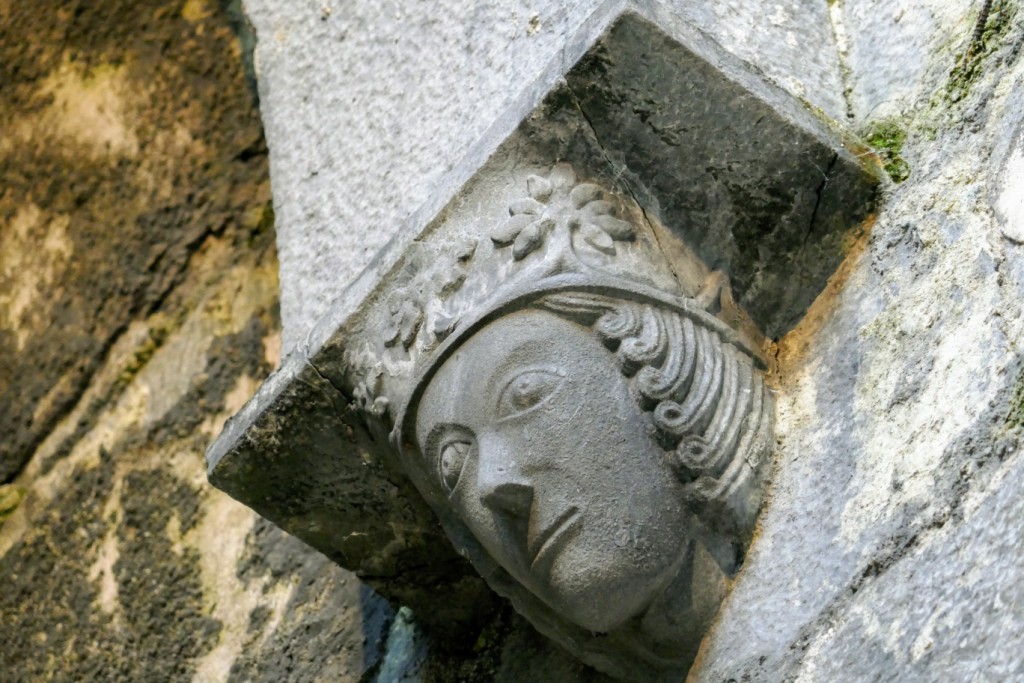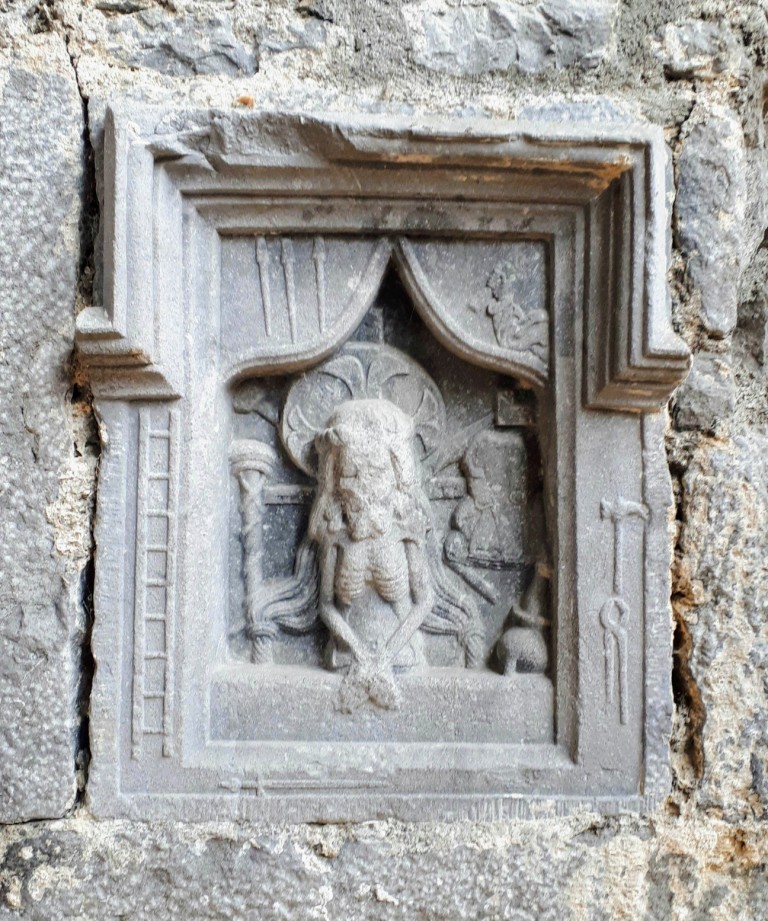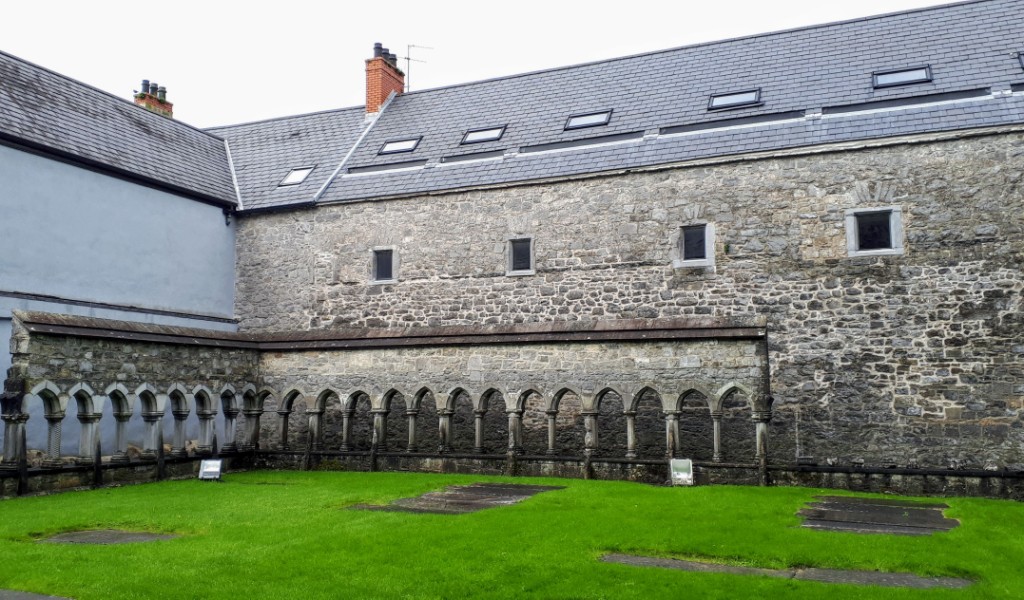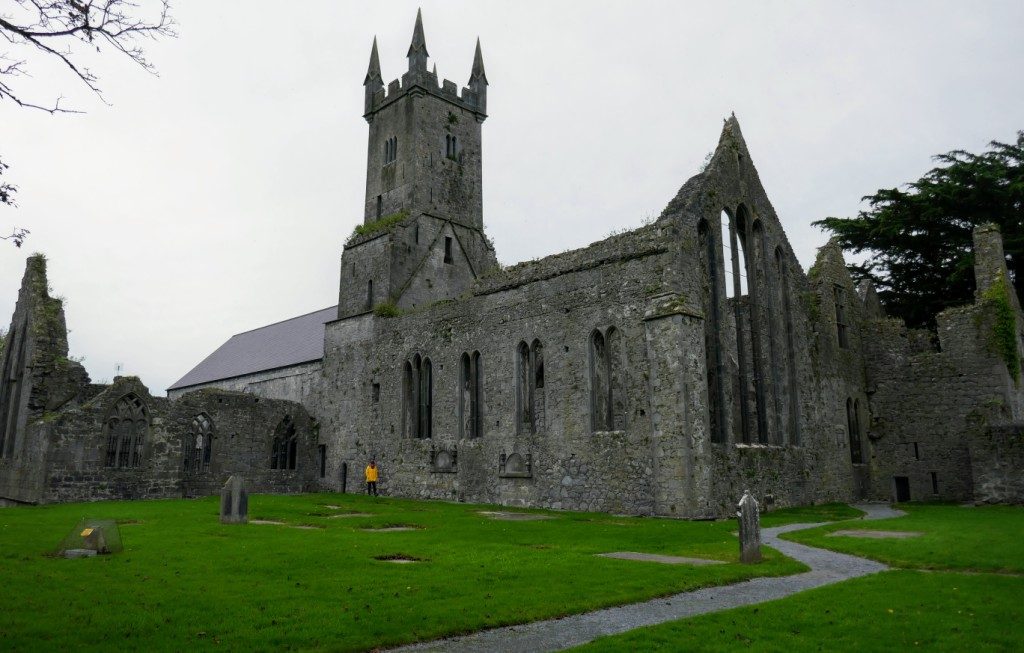My first night in Ireland, after 18 years away, I had a hotel room in Ennis, County Clare, with a window facing directly onto Ennis Friary. The sight of this 13th century Franciscan friary that had seen so much history was a perfect introduction to how Ireland’s preserved heritage structures are OLD old, compared to Toronto’s (founded 1793).
The visitors’ guide notes that:
An Office of Public Works staff member gave me an excellent piece of advice, that set me in good stead for the rest of my trip. Look up! In the nave, look in the corners and on the corbels of the arches for special carvings. In particular, she pointed out the heads of a bishop and of a king on the south side, and two rams heads on the north side.

In the 1800s the walls of the nave were plastered over, so during 2010-2013 conservation projects, I gather that it was a surprise to uncover this medieval carving of an image of Ecce Homo (“Behold the Man”), in a niche between the nave and transept.

It was quite interesting to see how the various structures on the edge of the friary complex have been incorporated into modern buildings, including my hotel. For example, the wall of the (restored) cloister walk on the north side is now part of The Cloister Restaurant!

Stepping into the unroofed chancel in a drizzle, I promptly slipped on the paving stones, but luckily caught myself from falling. My own fault, as I’d been warned. Another good introduction that served me well for the historic site visits to follow: look up, but also watch your step!
Ennis Friary is museum no. 71 in my #100museums challenge (see 100 Museums Challenge).

